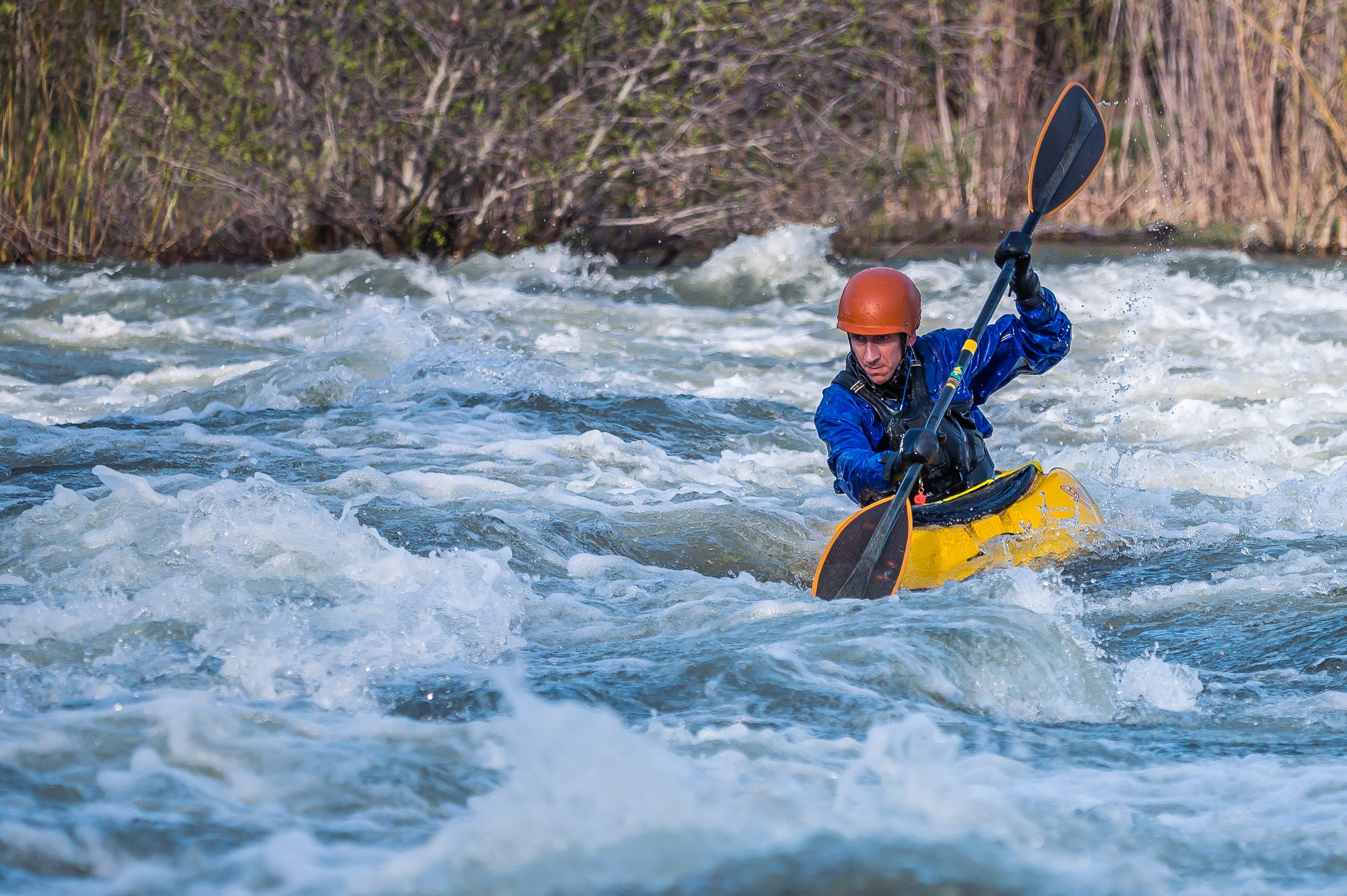
The Complete Guide to Whitewater Kayaking
Check out the complete guide to whitewater kayaking. Discover amazing places to go kayaking, from Bali to Italy, and France.
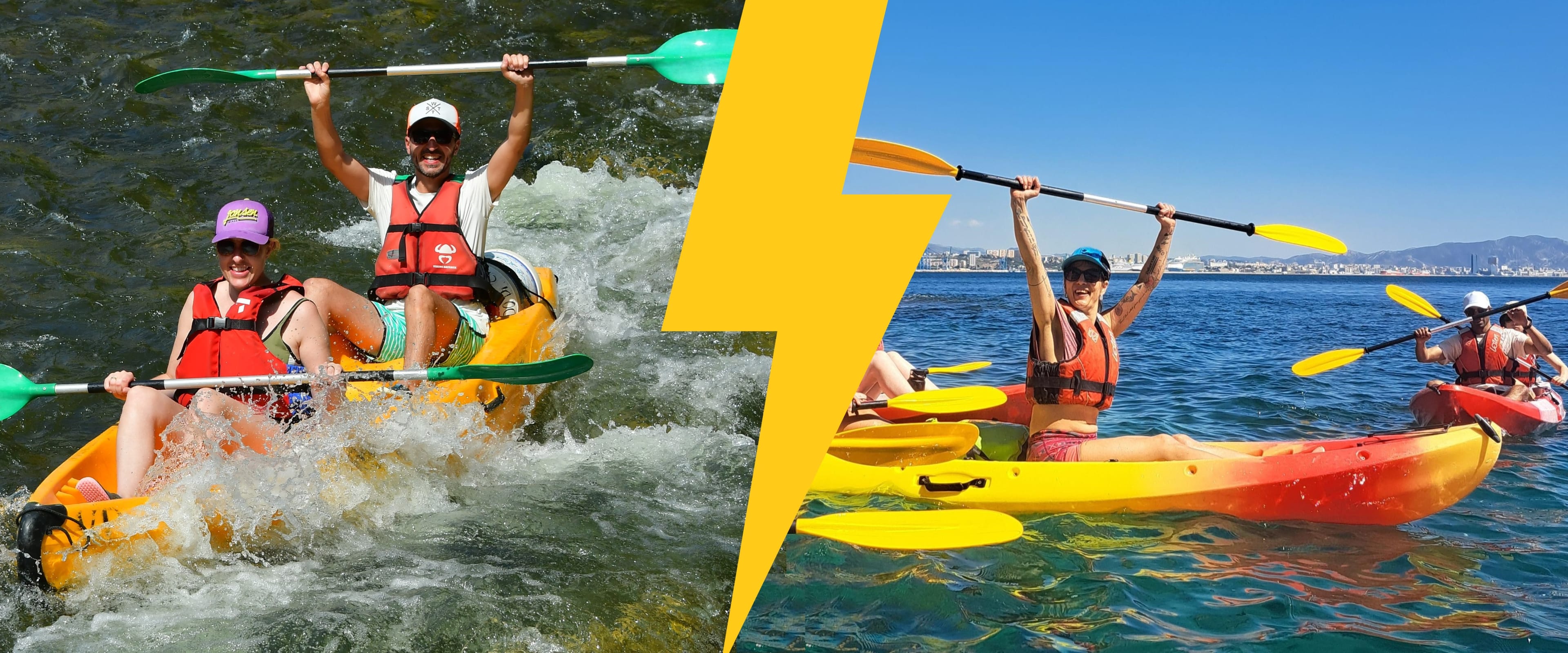
Both sports and leisure activities, river kayaking and sea kayaking are very different. The two differ in a few ways that may seem insignificant, but are nonetheless very important for everyone involved!
The history of kayaks goes back more than 4,000 years, to the time when the Inuit (indigenous people of the Arctic) invented the "qajaq" to enable them to travel and hunt in the icy waters of the Far North. The first kayaks were made using seal skins covered in blubber, sewn together and stretched over a driftwood structure (otherwise made of animal bone, caribou antler, etc., any other hard, sculptable material), so as to withstand the stresses of the harsh Arctic environment. It is only since the end of the twentieth century that kayaking has diversified, bringing with it changes in the structure of boats and their use.
So what are the differences between sea kayaking and river kayaking these days?
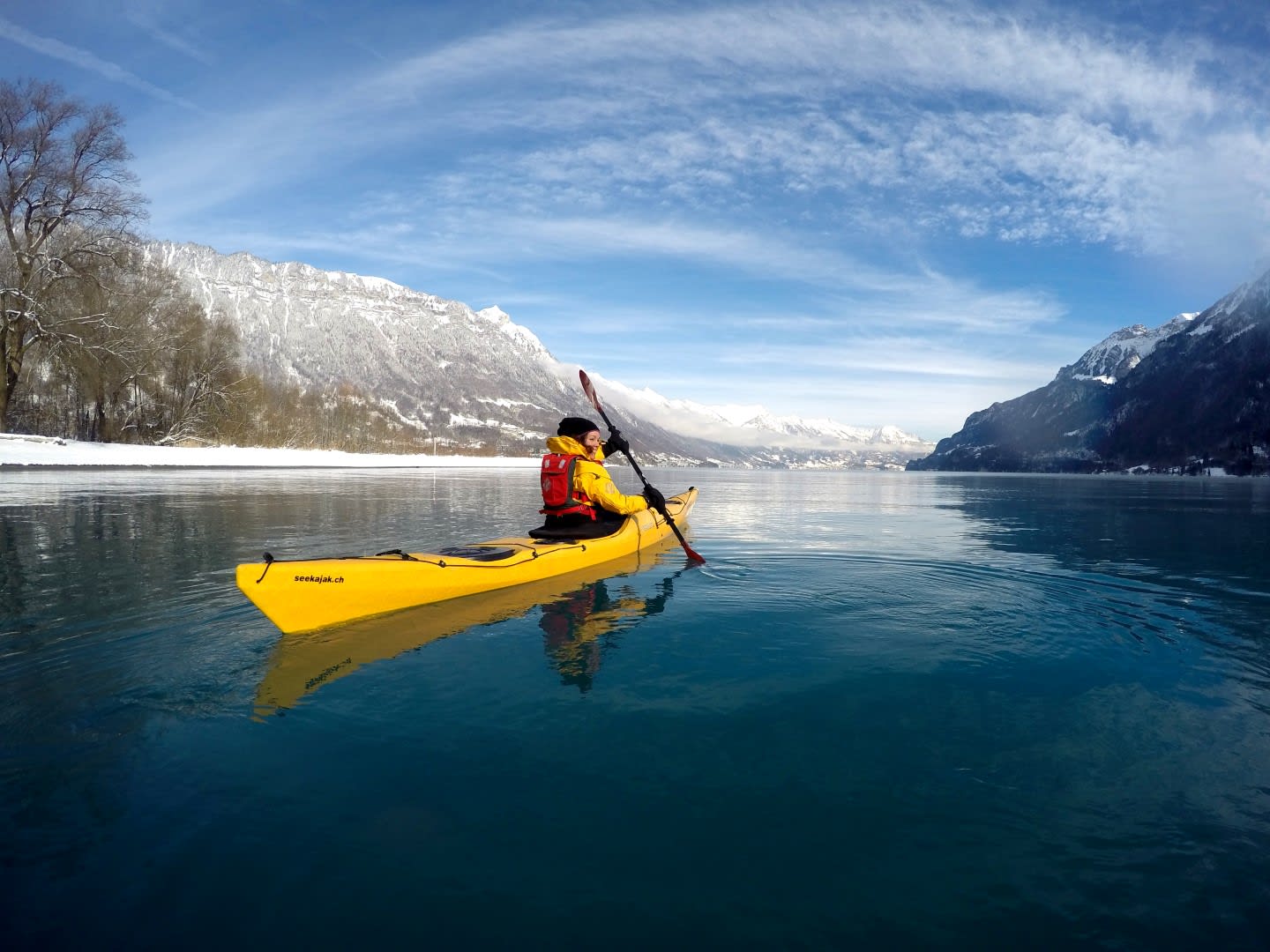
Contrary to what its name suggests, sea kayaking can be practised not only at sea, but also on other bodies of water such as large lakes, fjords and rivers. Depending on the weather conditions, it's possible to have the wind against you as well as the current, which can make the activity sportier than you think.
Structurally, a sea kayak is long (at least 3.5 metres) and streamlined, with its front end raised to face the waves. Approved, it must be at least 3.5 metres long, self-draining (i.e. the parts of the kayak exposed to the elements can permanently evacuate accumulated water by gravity) and meet the buoyancy requirements for any craft considered to be a vessel, which means it can be sailed more than 300 metres from a shelter (any place on the coast that a kayak can approach and take refuge in before setting off again, without assistance).
There are 2 types of sea kayaks:
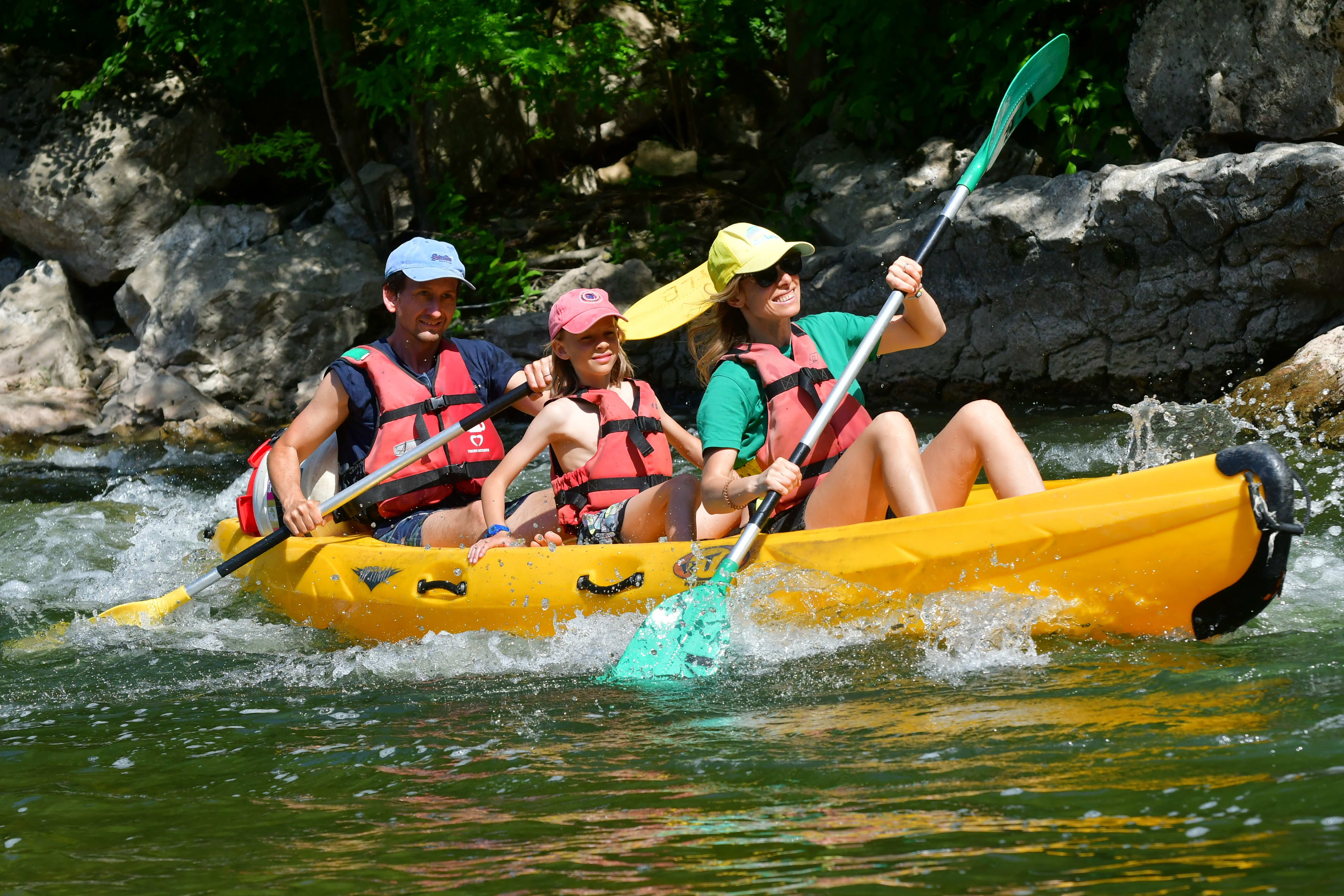
River kayaks can be used not only in rivers, in the direction of the current, but also in lakes or at sea, but only within 300 metres of a shelter, as they fall into the category of beach craft. A river kayak is shorter than a sea kayak (less than 3.5 metres), with a structure that is wider or narrower depending on its use: the wider the kayak, the more stable it is, but the slower its speed. The wider the kayak, the more stable it is, but the slower it is. It also has a more oval shape, which makes it easier and quicker to steer against obstacles, particularly with the help of your own weight on board, and to practise eskimo roll, the manoeuvre used to right and turn the kayak.
River kayaking is often associated with canoeing, which is different again: in a kayak, you sit with your legs stretched forward and slightly bent, whereas in a canoe, you sit on a bench, with your legs bent, or on your knees. The paddles used are also different, with the kayak using a double paddle (2 blades) and the canoe a single paddle (one blade).

Despite these differences, sea kayaks and river kayaks have a lot in common. Both allow you to navigate on the water, using a double paddle that is chosen not according to the structure of the kayak, but rather according to your morphology and your objectives: speed, technique, power, etc. You should always use the right equipment (buoyancy waistcoat, waterproof canister, navigation map), although you will need more equipment if you are sea kayaking more than 300 metres from a shelter (up to a maximum of around 3.7 km):
River kayaking and sea kayaking are sports designed for having fun and discovering magnificent natural sites all over the world, with the option of going on a guided excursion or hiring a boat to explore certain places yourself. Both are accessible to everyone, with varying restrictions depending on the activity you choose (hire or excursion) and where you're going.
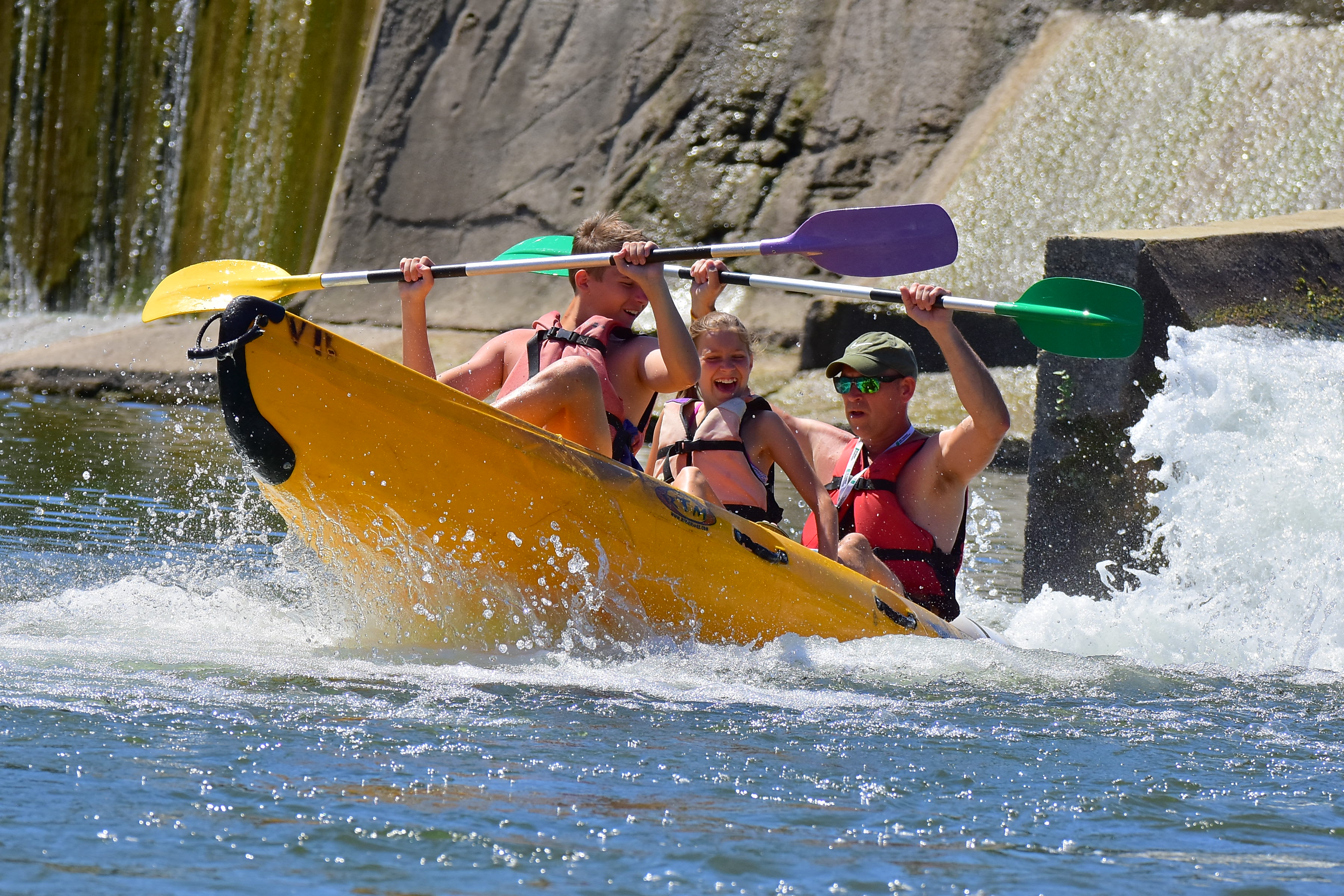
Having discovered the differences between these 2 water sports, you're probably wondering where in the world you can go sea kayaking or river kayaking! But you should know that there are many other types of kayaking besides sea kayaking and river kayaking: surf kayaking, fishing kayaking, kayak-rafting and so on. You'll be amazed by their diversity, and adrenalin-seekers will be delighted to discover white-water kayaking!